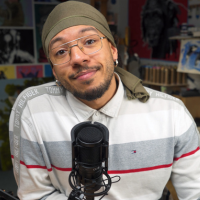4th June 2025
Storytelling with nature
Storytelling is an integral part of human development, history and culture.
Today, we will explore the many ways we can use storytelling to share our nature experiences.
Live event
*You can use a timezone converter to check the workshop time in your area.
4th June, 12 noon - 1pm London (BST); 9pm - 10pm Brisbane, Australia (AEST).
Telling Nature’s Stories with Jules Woolford
Nature journaling prompts and ideas
Sometimes we are lucky enough to have personal interactions with individual animals. These interactions can be meaningful and might stay in your mind for a long time afterwards. It might be a wordless conversation with a grasshopper, or interactions with a bird that visits your garden every day. Capture the story of this interaction in your nature journal in a way that feels meaningful to you.
Australian author and illustrator Trace Balla uses storytelling to connect with and communicate about nature and landscape. She creates graphic novels which share the stories of people and place. In this video, you can see how Trace uses walking maps to tell the story of outdoor experiences in a meaningful and joyful way.
Try telling the story of your own movement through the landscape using a walking map. Use a wandering line to show your route, adding pictures and written annotations to describe what you experienced along the way.
Sometimes we just miss out on a nature experience and the sense of lost opportunity is what stays in our minds.
Write about a time you almost saw or experienced something in nature. It might be an animal sighting that you missed by moments, a bird you could hear but could not see, or a trail you chose not to follow. Turn that almost into a story: What did it feel like to be on the brink of that experience? What might have happened if you had seen, heard, or experienced that moment differently?
The landscape you see today has been shaped by everything that happened there in the past. This landscape history might be known or unknown, but a little bit of research can help tell some of the story.
Reflect on the landscape where you live. Who lived in this place at different periods in history and what types of land use were practiced here? What was this place like 100 years or 1000 years ago? What about 10 000 years, 100 000 years, or even further back into geological history? Do some research into the history of your landscape and how it has changed over time.
Everything in nature has a story, and it can be fun to imagine how something came to be here in your nearby environment and what it has experienced along the way
Choose an object in nature such as a rock, tree, feather or shell. Imagine it could tell its story. Where has it been? What has it experienced as it travelled through the landscape or through time? Add your chosen object to your nature journal and see if you can tell some of this story with words and pictures.
On the Journaling With Nature podcast, host Bethan Burton always asks guests to reflect on their origin story and the seeds that were planted in their early life that led to their love of nature.
Write the story of how you fell in love with nature. Did you have a mentor who guided you towards the natural world? Do you have nature in your childhood memories? Use words, images, or a mix of both to tell this personal story.
If you are enjoying the week, please consider making a donation to help cover the cost of running the event.
Your generous support helps make International Nature Journaling Week possible.
Thank you!







